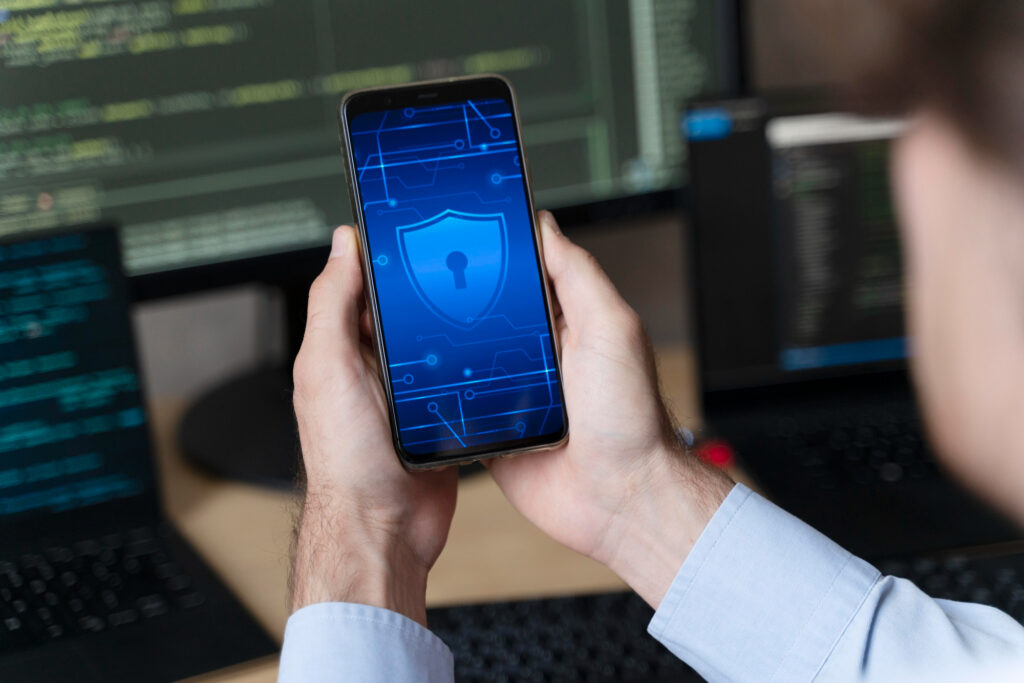In today’s digital age, smartphones are an integral part of our lives, serving as personal assistants, communication devices, and information hubs. However, concerns about smartphone security have given rise to questions like: Is it possible to hack a smartphone remotely? In this article, we will explore the possibilities, the challenges, and the measures you can take to safeguard your smartphone.

Understanding Smartphone Security
Smartphones are equipped with a range of security features to protect your personal information and data. Some key aspects of smartphone security include:
-
Lock Screen: Smartphones typically require a PIN, password, pattern, or biometric authentication (such as fingerprint or facial recognition) to unlock the device.
-
Encryption: Data stored on the smartphone is often encrypted, making it difficult for unauthorized access.
-
Operating System Security: Smartphone operating systems, like iOS (Apple) and Android (Google), undergo continuous security updates to address vulnerabilities.
-
App Permissions: Apps request specific permissions to access certain functions or data on the smartphone, and users must grant these permissions.
-
Remote Wipe: Some smartphones have remote wipe capabilities, allowing users to erase data on the device in case of loss or theft.
-
Two-Factor Authentication (2FA): Enabling 2FA adds an extra layer of security when accessing accounts or apps.
Is It Possible to Hack a Smartphone Remotely?
While the possibility of remotely hacking a smartphone exists, several challenges and limitations must be understood:
-
Operating System Security: Modern smartphone operating systems are designed with robust security features, making it challenging for remote hackers to exploit vulnerabilities.
-
App Store Safeguards: App stores like Google Play and the Apple App Store have stringent review processes to ensure that apps are not malicious. This reduces the likelihood of downloading a compromised app.
-
Phishing: Phishing attempts, which involve tricking users into revealing their login credentials or other sensitive information, are more common methods of attack. Remote hackers often rely on social engineering rather than direct technical exploits.
-
User Awareness: Educated smartphone users are less likely to fall for phishing scams or inadvertently install malicious apps.
-
Authentication Measures: PINs, passwords, and biometric authentication make it challenging for hackers to unlock the device and access data.
-
Operating System Updates: Regularly updating your smartphone’s operating system ensures that known vulnerabilities are patched, minimizing the risk of remote exploitation.
Potential Risks of Hacking a Smartphone Remotely
If a smartphone is hacked remotely, several risks may arise:
-
Privacy Invasion: Hackers could access personal photos, messages, emails, and other sensitive information, violating your privacy.
-
Financial Loss: If the smartphone is used for mobile banking, remote access can lead to unauthorized financial transactions.
-
Identity Theft: Hacked smartphones may lead to identity theft, as personal and financial information can be exposed.
-
Unauthorized Use: Remote hackers may use your smartphone to impersonate you or engage in malicious activities.
-
Data Loss: Unauthorized access can result in data loss or manipulation, which may be irreversible.
Measures to Safeguard Your Smartphone
To protect your smartphone from remote hacking attempts and maintain your digital privacy, consider implementing the following precautions:
-
Strong Authentication: Use strong, unique PINs, passwords, or biometric authentication methods to secure your smartphone.
-
App Store Caution: Only download apps from reputable sources like Google Play or the Apple App Store, and be cautious of third-party app stores.
-
Permissions Awareness: Review app permissions and avoid granting excessive access to your smartphone’s functions or data.
-
Operating System Updates: Keep your smartphone’s operating system up to date with the latest security patches and updates.
-
Phishing Awareness: Be cautious about clicking on links, downloading attachments, or providing personal information to unverified sources.
-
Two-Factor Authentication (2FA): Enable 2FA wherever possible to add an extra layer of security to your accounts and apps.
-
Regular Backups: Regularly back up your smartphone’s data to ensure you can recover information in case of loss or compromise.
Conclusion
While it is theoretically possible to remotely hack a smartphone, the robust security features of modern operating systems and the increasing user awareness make it a formidable challenge. Safeguarding your smartphone involves a combination of strong authentication, careful app selection, regular updates, and awareness of potential phishing attempts.
Maintaining smartphone security is not only vital for protecting your personal data but also for ensuring a safe and private digital environment. By following best practices, you can continue to enjoy the benefits of your smartphone while minimizing the risks associated with remote hacking attempts.